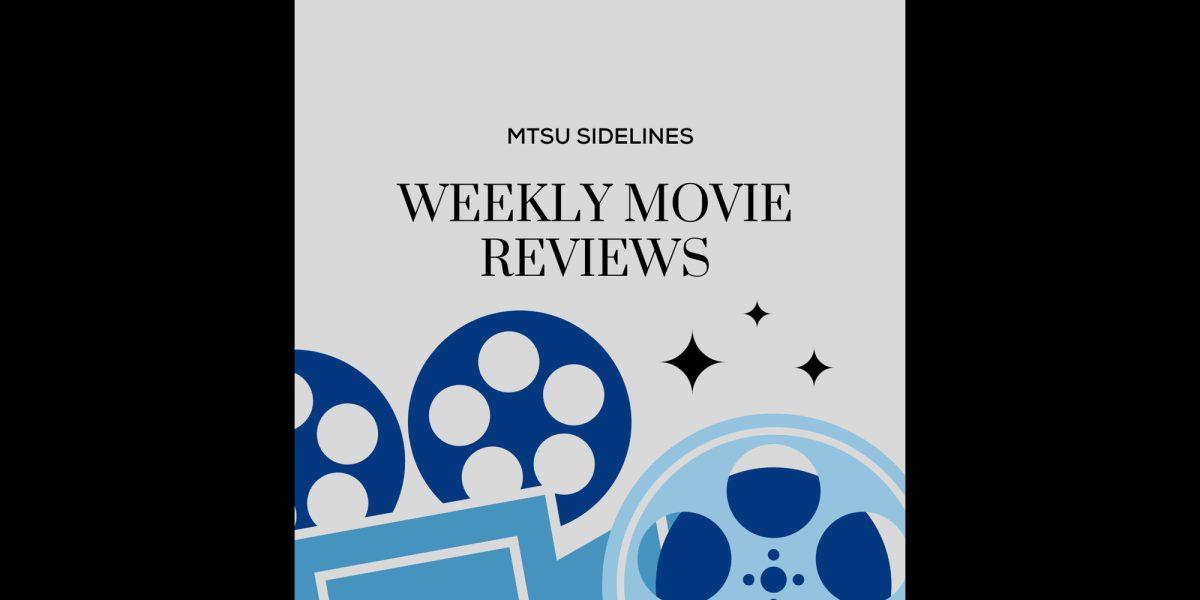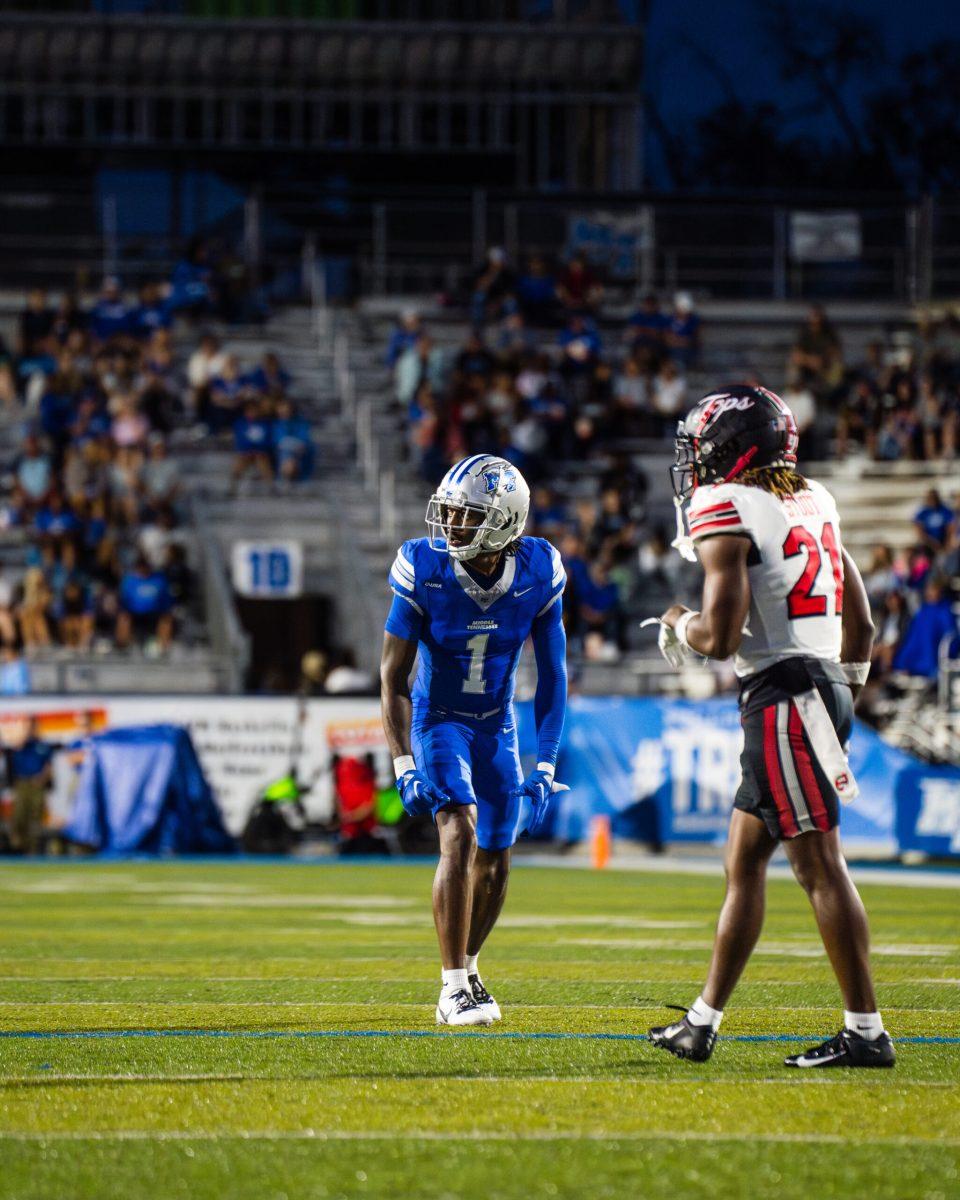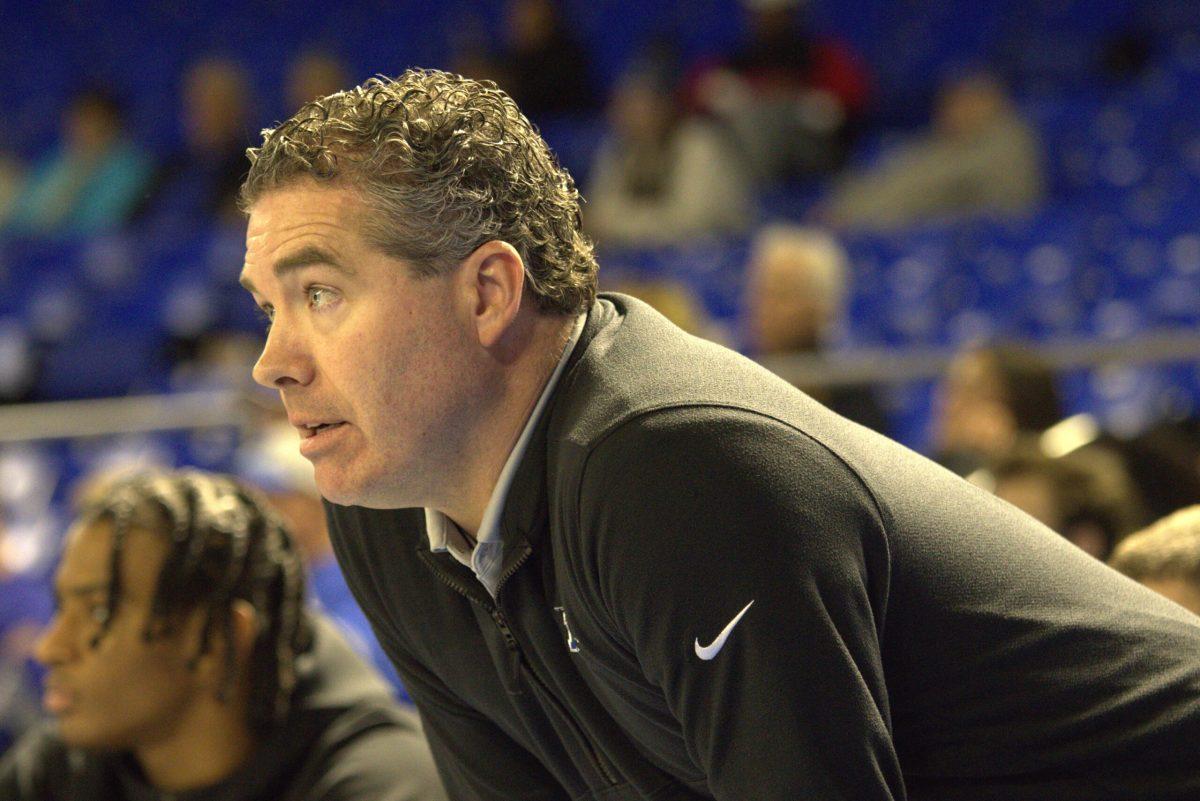Featured Graphic by Destiny Mizell
Story by Larry Rincon
“Your family must choose to willingly sacrifice one of your three in order to prevent the apocalypse…If you fail to make the choice or fail to follow through with the sacrifice, the world will end”
— Paul Tremblay, author of “The Cabin at the End of the World”
From a vacation turned murder-fest, February kicks off 2023’s line up of film and television adaptations of novels with “Knock At The Cabin” directed by M. Night Shyamalan.
The film, based off of Paul Tremblay’s “The Cabin at the End of the World,” focused around a family of three; Fathers Andrew and Eric with their daughter Wen. They are burdened with the task of stopping the apocalypse after a group of four strangers, Leonard, Sabrina, Redmond and Adriane, meet at their cabin claiming that the end of the world draws near.
Shyamalan is no stranger to turning original stories into stories meant for the screen. Prior to working on “Knock at the Cabin” he directed, wrote and produced “Old,” a live adaptation of the graphic novel “Sandcastle” by Pierre Oscar Levy and Frederik Peeters. He took the graphic novel’s themes of life and death as well as the cycle of life to tell the story of families unknowingly forced into an observational study on a beach where twenty minutes is equivalent to one year. The film, however, took a turn from its original source by showcasing the self-centered nature of humans as they approached death at an unnatural rate and downplayed the themes important to the success of the graphic novel. Shyamalan ineffectively added drama to the story, and as a result created a lackluster film that disappointed both viewers and readers.
Contrary to his performance with “Old,” “Knock at the Cabin” demonstrated the development and massive improvement of M. Night Shyamalan as a director. The film proved that it is possible to alter a pre-existing story and create a meaningful ending for the viewer. He altered the reputation of his ability to effectively change a novel into a story for the screen.
Viewers who have read the novel beforehand should not expect a word-for-word adaptation. The first twenty minutes of the film may follow the book closely, even taking certain dialogue straight from the pages, but not every scene made it onto the screen. All the major plot points were present up until the second character death; However, once Adriane dies, the film started to deviate from the book.
The book never clarified if the apocalypse was real or not, leaving it up to the reader to decide if the end of the world was happening or if everything truly was a coincidence. Both theories have sufficient evidence throughout the novel. The film, however, chose to keep that ambiguity until the very end, revealing that the apocalypse was really happening. This ultimately forced the characters to decide who lives and who dies.
In addition, Shyamalan’s film further develops on the moment Eric saw a light-like figure as Redmond was killed. When all four of the strangers have died and the world fell apart around them, Andrew and Eric had a heart-to-heart. Eric explained that after seeing the light his eyes and mind have been opened and he understands that they need to sacrifice one of their family members. While Wen is not shot in the film, the novel ended with the two of them carrying Wen’s body as they faced whatever state the world was in.
I believe the film adaptation of the story is a lot more impactful and is more meaningful in relation to the way the characters are developed. The entirety of “Knock at the Cabin” is written and filmed to create empathy between the characters on the screen and in the audience.
Empathy is also developed through the background of the group of strangers. The four characters introduced themselves to the family the same way they introduced themselves in the novel; However, once Adriane started talking about her son and Leanard about the kids he coached, the film reached for the humanistic feeling that wants to protect the greater good. In addition, the viewers at this point have already formed a strong connection with the family of three through the use of flashbacks, so when Eric and Andrew need to make the decision on who dies there is also empathy for their desire to keep their family whole. The end of the movie stayed on the theme of empathy. As Andrew looks through the belongings of the four strangers he and the audience realize that every word they said was true from the start. A mixture of guilt and acceptance is felt with the realization that Eric’s death did stop the apocalypse from happening. The strangers came with the intention of spending their last days together, but the absurdity of the situation never made them seem believable.
From the first few shots of the film it is established that the characters are important and everything outside of the cabin (the rest of the world) is not. As the viewers followed Wen walking through the grass catching grasshoppers, the shots contain a shallow depth of field focused on the nearest plant. The rest of the film followed a similar style. The characters are always in focus while the background is blurry. By filming this way, the viewer is forced to always focus on the character speaking. The rest of the world outside the cabin does not matter since the problem and solution lies within the characters. This shallow depth of field emphasizes their expressions and feelings.
M. Night Shyamalan’s decision to make the apocalypse real and the decision to make the characters more dimensional created a strong relationship between the audience and the film. Through toying with the emotions of the audience, it beckons the question: “Would I die for the greater good?”
Larry Rincon is a Movie Review for MTSU Sidelines.
To contact Lifestyles Editor Destiny Mizell, email [email protected] more news, visit www.mtsusidelines.com, or follow us on Facebook at MTSU Sidelines or on Twitter at @Sidelines_News.
Movie Reviews Every Friday.








